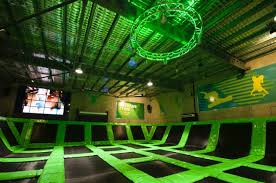The Australian trampoline market is witnessing an increasing number of location closures, according to reports.

The latest victim of what some see as a saturated market is Launch Zone in Townsville in north-eastern Queensland.
Once described as Australia’s largest indoor trampolining arena, it offered 150 interconnected trampolines, with eight different jumping zones, but closed abruptly according to the Townsville Bulletin.
The reasons for this specific closure haven’t been confirmed but the industry in Australia is highly competitive and, like others, is being hit hard by unpredictable and often crippling insurance rates.
Australasian Leisure Management quotes HIB Insurance Brokers managing director Michael Alexander as saying (late last year) that the market has shrunk by about 50 per cent in the last couple of years and that insurance costs were largely to blame.
He advised "In some cases, premiums have gone up over 300 per cent and excesses have gone up significantly."
He added: "Whether it be a trampoline park or a single trampoline at a caravan park, trampolines are a no-no for probably 98 per cent of the insurance market."
Last November, the country’s first code of practice was created, setting a standard by which operators could address the rising popularity of trampoline parks and the associated surge in injuries which affects most mass-participated, physical activities.
Through collaboration with industry, government, academic and consumer groups, Standards Australia published the Australian Standard, AS 5159.1:2018, Trampoline park facilities, Part 1: General safety requirements and test methods.
“In drafting this standard, we were conscious that we needed to strike a balance between the known hazards of trampoline parks and the benefits that could be obtained from their use,” said Professor David Eager, chair of the technical committee that drafted the standard.
Signing up to the new regulation is however voluntary, and not all operators have taken the step.
Eager said that he industry could be split into two: 50 per cent who were trying to do the right thing and the other 50 who are "in for a quick buck, making money and leaving a bunch of injured people behind".
When the standard was introduced, only eight operators running 17 of the then 70 trampoline parks in the country were publicly committing to AS 5159.1:2018.
One of the operators that has signed up is Sky Zone. Michael Schreiber, CEO of Funlab which has the rights to Sky Zone in Australia, told InterGame: “Without doubt the trampoline park market in Australia is challenged with insurance. This could very well be a structural challenge, particularly with developing new parks where it is virtually impossible to get insurance.
“We are hearing of instances where children’s soft-play centres are being denied insurance as a result of including a trampoline section.
“In terms of on-going operations, each renewal is a crap shoot, the only difference being you know you are going to lose - it’s just by how much, if not everything if insurance is denied! Rates are being jacked up hundreds of per cent a year.
Schreiber continued: “Sky Zone is a founding member of the Australian Trampoline Parks Association and continues to operate at the highest levels, particularly in health and safety and our existing parks continue to attract and delight close to a million guests per annum.

